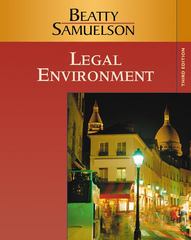
1. Consider an exchange economy with two goods, good 1 and good 2, and two consumers, A (Ana) and B (Bob). Anas preferences are represented by the Cobb-Douglas utility function UA (act, 2,2 ) = (2 ) ' (a2 )2 and her endowment is WA = (wi, w2 ) = (8, 2). Bobs preferences are represented by the Cobb-Douglas utility function uB(xP, x2) = (xP)2(x2 )] and his endowment is WB = ( wf , w2 ) = ( 2 , 8 ) . (i) Draw an Edgeworth box describing this economy. Mark the endowment point. Show in your Edgeworth box the set of feasible allocations that Pareto dominate the initial endowment (these are the feasible allocations that can be reached through voluntary trade). (ii) Derive the set of all feasible Pareto efficient points, and plot it in the same Edgeworth box. Denote which points represent the contract curve. (iii) Compute the competitive equilibrium prices and the associated allocation of the two goods.2. Repeat question 1 for the same endowments, but with preferences now represented by the following utility functions: \"43:14.33 = 2(5131") + 4(56'2\") u..=.e(9=1332723)=(1191'B)(5432:B) (i) Draw an Edgeworth box describing this economy. Mark the endowment point. Show in your Edgeworth box the set of feasible allocations that Pareto dominate the initial endowment (these are the feasible allocations that can be reached through voluntary trade). (ii) Derive the set of all feasible Pareto eicient points1 and plot it in the same Edgeworth box. Denote which points represent the contract curve. (iii) Compute the competitive equilibrium prices and the associated allocation of the two goods. 3. Consider the following production function with inputs L and K: Q = (x/E + iv()2 The input prices of L and K, m and r respectively, are both 1. (a) Is it constant, increasing or decreasing return to scale? Consider our target production is Q = 64. (b) What are the marginal products of capital and labor respectively at K = 25; L : 9? Should the rm use more labor or capital? (c) What are the marginal products of capital and labor respectively at K = 4; L = 36? Should the rm use more labor or capital? (d) What is the optimal use of capital and labor given the production function and price? What is the cost? ? (e) Now if 1' : 2 but u: : 1 as before, what is the optimal use of labor and capital? How does it different from before? (Leave your answers in decimal places if it is the case.) (f) Now, consider a technological advancement such that Q = 2(\\/E + x/I?)2 and m = r : 1, then what is the optimal level of K and L? Any change in K/L? What is the new cost? (g) Now, consider a technological advancement that only promotes the productivity of capital Q=(\\/E+~/)2 while u: = r = 1, then what is the optimal level of K and L? Any change in K / L? What is the new cost










